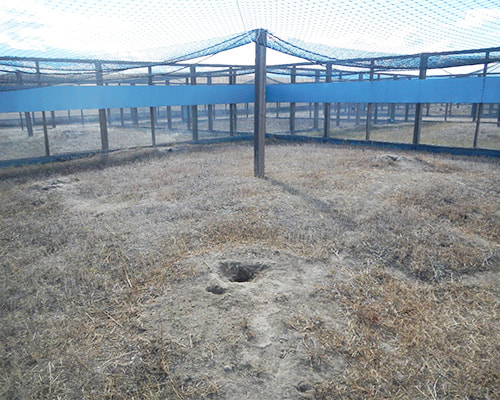Black-Footed Ferrets Preconditioning
Tyler Tretten, U.S. Fish and Wildlife Service
February 1st, 2023
February 1st, 2023
|
It was widely believed that the black-footed ferret was lost to extinction before the species was rediscovered near Meeteetse, Wyoming in 1981. The final 18 individuals from this remnant population saved the species from extinction through intensive captive breeding efforts, and the subsequent decades have seen the production of over 10,000 captive- and wild-born descendants. Tremendous strides in recovery efforts ranging from captive breeding and rearing to habitat preservation and disease management have allowed for animals to be annually released back into the wild for over 30 years. From this standpoint, the black-footed ferret could be considered one of the great conservation stories of our time. That being said, the species has justifiably remained listed as endangered on the Endangered Species Act (ESA 1973, as amended) since its inception
|
|
After the last ditch effort to save the species through captive breeding proved successful beginning in 1987, reintroductions began in the ferret’s former range in 1991 and have occurred annually since that time. It was discovered early in the reintroduction process that preconditioning ferrets in a quasi-natural environment before release drastically increases their chances for wild survival (Biggins et al 1998, 1999), and every captive-raised ferret released since this discovery has undergone a preconditioning period.
Captive-raised ferrets released today are preconditioned at the USFWS National Black-footed Ferret Conservation Center in Larimer County, Colorado. Preconditioning pens are outdoors and surrounded by an active black-tailed prairie dog colony that allows preconditioning ferrets the opportunities to experience many of the senses that await them upon wild release. Pens measure approximately 12 x 12 m with a soil floor and are resistant to most ferret predators, allowing ferrets an acclimation period for life outdoors while maintaining a minimal risk of various threats. Burrows constructed by prairie dogs or wildlife professionals are within each pen and provide ferrets the opportunity to learn about these burrow systems and practice the skills they will need once released into the wild. Ferrets in pens are also provided the opportunity to hunt live prairie dogs, experience weather events, practice burrow exploration and excavation, interact with native flora and fauna, and explore an environment many times larger than what they experience in their indoor enclosures. |
An added side benefit of these pens is that they provide wildlife biologists the opportunity to witness the behaviors of ferrets in a quasi-wild environment that are often nearly impossible to regularly witness in the wild. Experimentation with pen-inhabiting ferrets is also possible and can provide managers with somewhat realistic expectations of what to expect with ferrets living in the wild. Black-footed ferrets are rare, solitary, nocturnal, secretive and largely fossorial— a challenging combination for anyone who attempts to observe them. The difficult-to-study life habits of wild ferrets paired with over 40 years of endangered status demonstrates that there is still much to learn that could feasibly be beneficial to the long-term survival of this species and the ecosystem it inhabits. When making decisions that determine whether a species survives into the future, it is essential to be informed with the widest base of knowledge possible; understanding life habits of a species provides much of this necessary foundation. Moving forward with a wide base of knowledge, we can better understand how to proceed in order to provide the greatest chances for future success.





